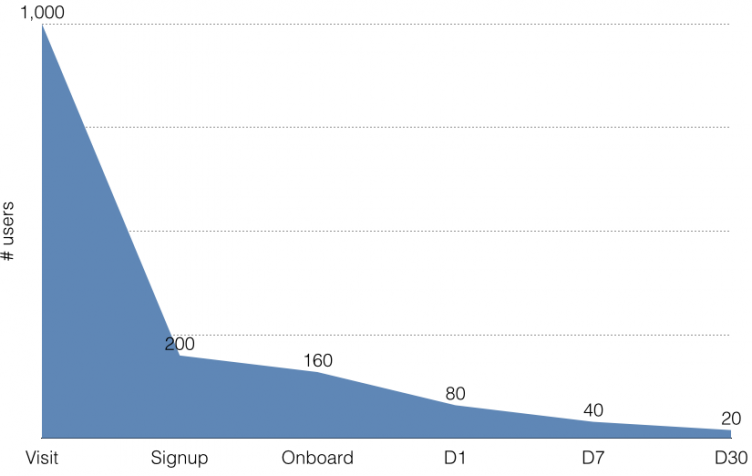Most users will never engage deeply with an app. It’s sad but true. Consider this devastating graph by Andrew Chen in his post on the next feature fallacy.

This is the attrition rate of users in your average app. Of 1,000 visits, you may only have 20 users engaged after a month.
So Andrew’s point is that your next big feature you are working on better be early in this cycle for it to have any real chance at impact.
I’m stealing a bit more of his post than I’d prefer, and I think he has a great deal of wisdom in this post, but this is how he suggests you choose which features to build, so as to maximize your resources and chances for success:
Picking the features that bend the curve requires a strong understanding of your user lifecycle.
First and foremost is maximizing the reach of your feature, so it impacts the most people. It’s a good rule of thumb that the best features often focus mostly on non-users and casual users, with the reason that there’s simply many more of them. A small increase in the front of the tragic curve can ripple down benefits to the rest of it. This means the landing page, onboarding sequence, and the initial out-of-box product experience are critical, and usually don’t get enough attention.
Similarly, it’s important to have deep insights on what users need to do to become activated, so that their first visit is set up properly. For social networks, getting them to follow/add friends is key, because that kicks off a number of loops that will bring them back later on. For a SaaS metrics app, it might be getting a JS tag onto the right pages. For a blog, it might be for them to pick a name, theme, and write the first post so they get invested. Isolating the minimum onboarding process lets you keep the initial steps high-conversion, yet set up their experience for success.
When a product is still early, when you’re searching for and building game-changing features, the resources those features eat through can be massive. The risk that your company takes in building them might be too high, and your team might overestimate the probability that a feature will meet your expected growth goals for it. There is always a chance that the next feature will bend the curve, but it requires being smart, shrewd, and informed.
Choose your features wisely. How early will the user interact with this? How many users will see it?
